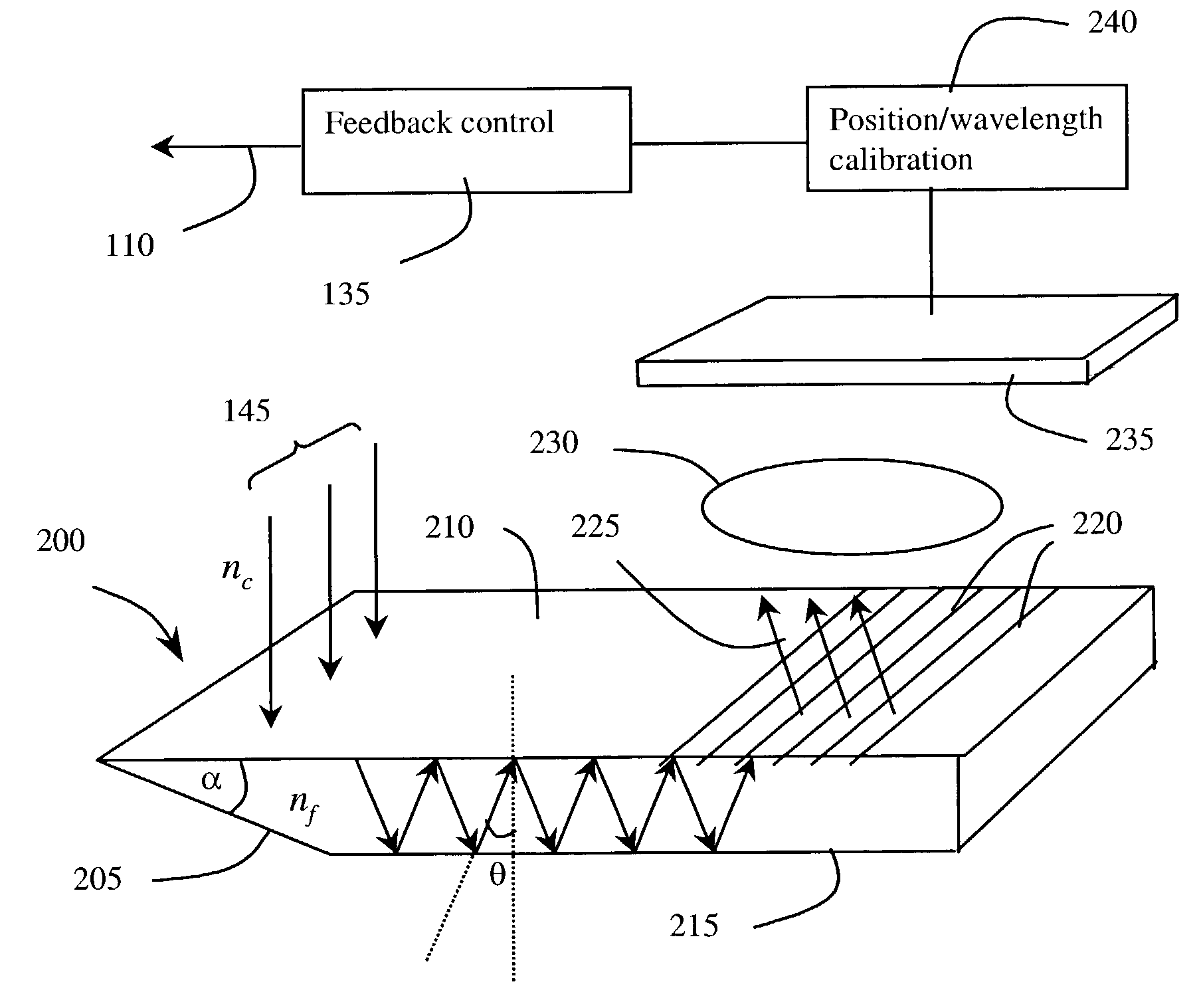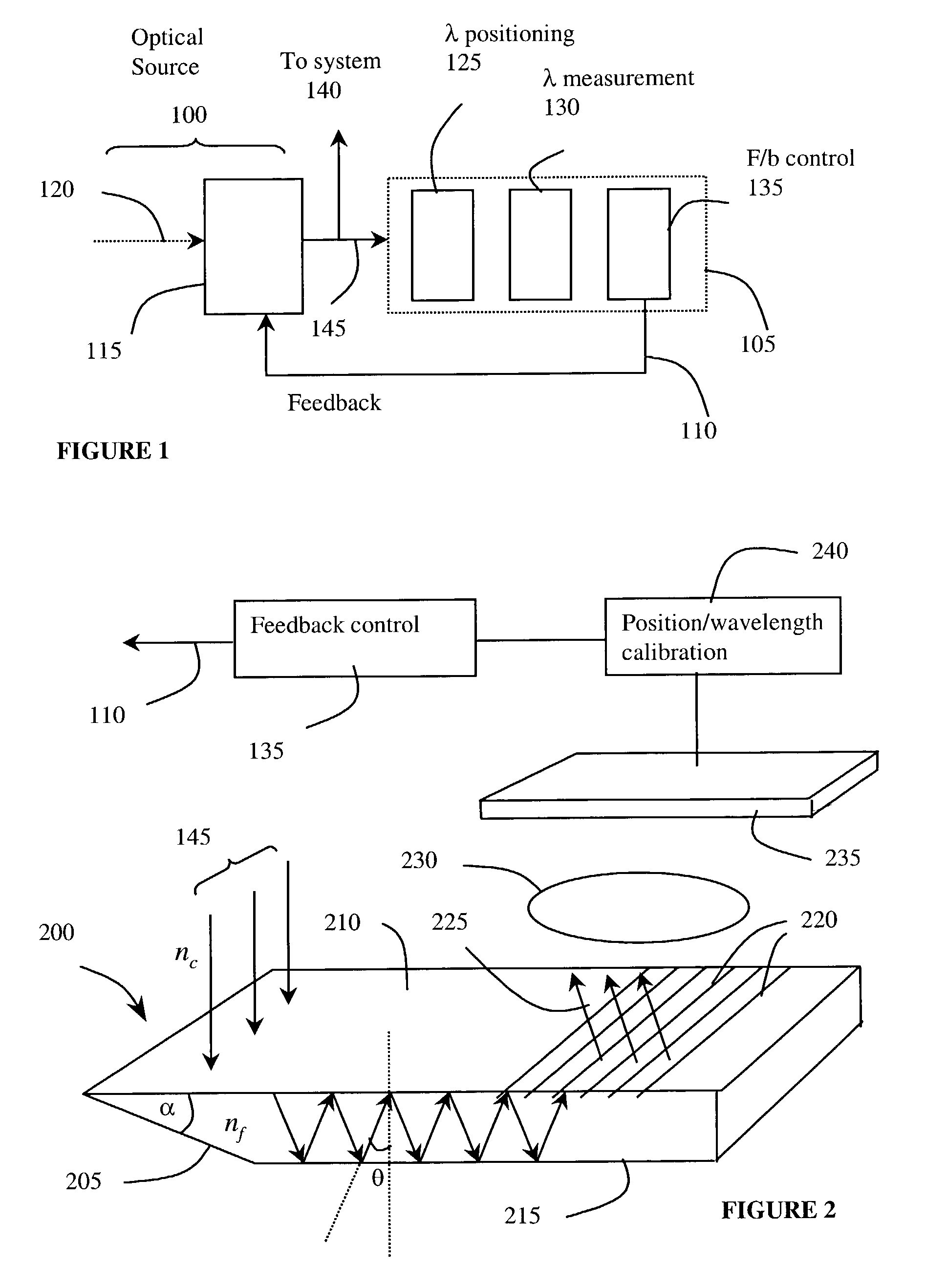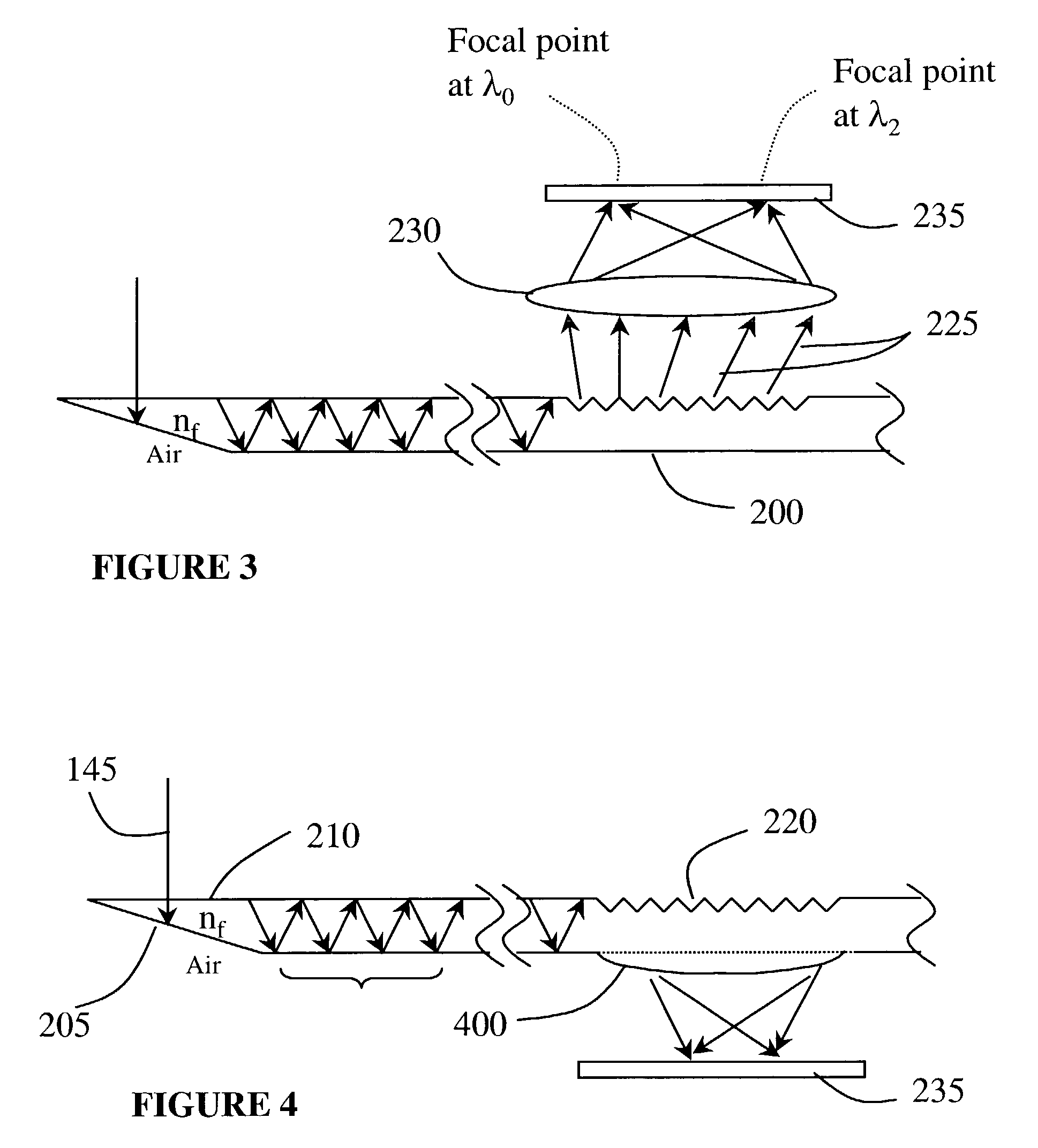Optical wavelength measuring device using guiding body and diffractive structure
a wavelength measurement and optical technology, applied in the field of optical characterisation devices, can solve the problems of difficult prediction of the spectral performance characteristics of the laser in response to changes in the drive voltage of the filter, non-linear wavelength tuning of the laser, and inability to predict in advance, etc., to achieve narrow linewidth, enhance or sharpen the spatial resolution, and simplify fabrication
- Summary
- Abstract
- Description
- Claims
- Application Information
AI Technical Summary
Benefits of technology
Problems solved by technology
Method used
Image
Examples
Embodiment Construction
Broad Principle of Operation
[0051]Referring to FIG. 1, an embodiment of the present invention provides an integrated arrangement and a method for monitoring the wavelength of incoming optical radiation and producing a signal when the wavelength changes. The signal can be used in a feedback loop to adjust the wavelength to keep it constant.
[0052]Such an arrangement might be used where radiation from an optical source 100 is being used to supply an optical system (not shown) which is wavelength sensitive. It is necessary to control the wavelength of radiation input 140 from the source 100 to the system. To do that, an optical characterisation arrangement based on an embodiment of the present invention picks up radiation from the source 100 and inputs it to a wavelength monitoring and feedback assembly 105. The feedback is used to tune the source 100 appropriately.
[0053]The wavelength monitoring and feedback assembly 105 is important. It performs the functions of:[0054]spatial redirect...
PUM
 Login to View More
Login to View More Abstract
Description
Claims
Application Information
 Login to View More
Login to View More - R&D
- Intellectual Property
- Life Sciences
- Materials
- Tech Scout
- Unparalleled Data Quality
- Higher Quality Content
- 60% Fewer Hallucinations
Browse by: Latest US Patents, China's latest patents, Technical Efficacy Thesaurus, Application Domain, Technology Topic, Popular Technical Reports.
© 2025 PatSnap. All rights reserved.Legal|Privacy policy|Modern Slavery Act Transparency Statement|Sitemap|About US| Contact US: help@patsnap.com



